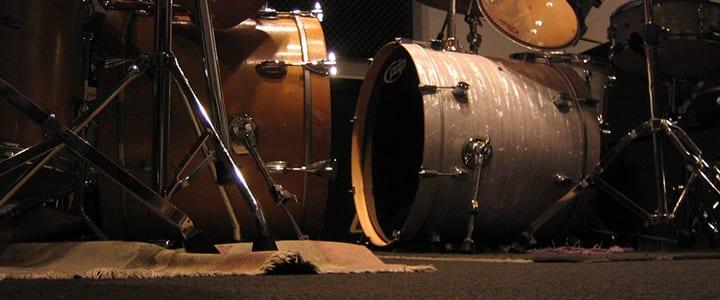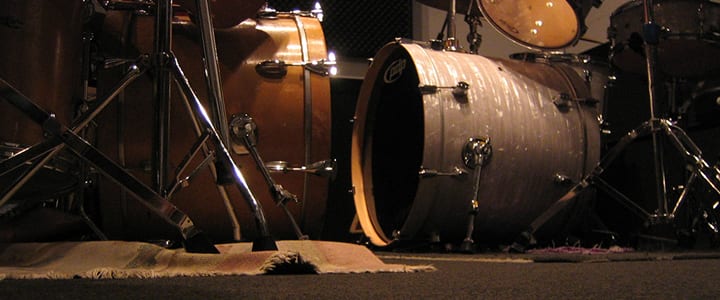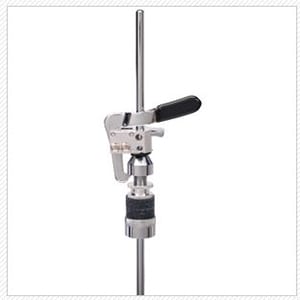If you want to be a solid all-around drummer, you have to work on the individual drumming components. This means developing your snare and bass drum technique. Here, drum instructor Tracy D. offers her tips and exercises to help you improve your bass drum technique…
The bass drum is an important part of the drum set. It provides the beat that holds the rhythm together. If you are a beginner drummer, you may be wondering how to get the most out of your bass drum technique.
In this blog post, we will provide some tips to help you boost your bass drum technique. Keep reading to learn more!
How Do I Get Better at Bass Drums?
Anyone who has ever tried to play the bass drums knows that they are not as easy as they look. The key to becoming a proficient bass drummer is practice and patience. Here are a few tips to help you get started:
- Start by sitting at the drums and getting a feel for the various components. Make sure you are comfortable with the placement of the foot pedals, hi-hat, and snare before moving on.
- Practice keeping a steady beat. A metronome can be helpful for this. Once you have mastered a consistent tempo, start experimenting with different rhythms and speeds.
- Listening to music is also essential for developing your skills. Pay attention to how the bass drum is used in each song and mimic those patterns on your own drums.
With some time and effort, you’ll be playing like a pro in no time!
Ready to start mastering the drums? Sign up for online drum lessons and learn more, like what you see in the video below:
https://www.youtube.com/watch?v=LwKF7LiXW3I
Bass Drum Technique – Here Are Some of the Best
The bass drum is the heartbeat and backbone of your drum kit, and the bass guitar’s close friend. The bass drum also drives the marching band and adds the dramatic effect to the large concert ensemble.
Like the snare drum, there are different types of bass drums for different styles of music. Here, I will discuss bass drum technique and application.
Bass Drum Technique (on the Drum Kit)
The bass drum is also known as the “kick” because you operate this drum with a pedal.
Different techniques can help you achieve your desired feel, volume, and rebound. While there’s usually some debate about whether heel-up or heel-down technique is preferable, each has its place.
Ideally, you should strive to be able to play with both techniques, as each method requires a shift in the balance of your body.
Heel Up Bass Drum Technique
The heel-up method is used for power, speed, and volume because you’re balanced more on your sit bones, and the weight of your leg rests on the ball of your foot.
The heel-down method is good for quieter passages, due to the weight of the leg resting on the heel.
With both of these positions, move your foot in a whipping motion, if you want instant rebound and resonance. This is different from “burying the beater,” which leaves it at rest against the bass drum head (which can muffle the sound) until the next stroke.
More advanced methods include the heel-toe (rebound arrested in the arch) and side-to-side (ball-of-foot) motions. Both are geared toward rapid-fire doubles with one foot. Both initiate a stroke and use a smooth motion to arrest the rebound and get another stroke from that move.
Double Bass Drum Technique
You may eventually decide that you want to try double bass drumming, which is a lot of fun, and allows you to play notes in rapid succession. It can also help you develop your weaker foot, which benefits your hi-hat work as well. If budget and practice space allow, you may want a configuration with two kicks, or you may prefer a double pedal. Each option presents a different feel.
You should strive for evenness and control in your strokes; you will find that your non-dominant foot will present the challenge. If you have already been playing for a while, your weaker foot will be less developed than your dominant foot.
Bass Drum Technique Video
For the following exercises, lead with your dominant foot in the bass. Once you’ve got that down, try leading with your weak foot.
Double Bass Drum Exercise 1: 95 bpm
Double Bass Drum Exercise 2: 110 bpm
Double Bass Drum Exercise 3: 125 bpm
Download the drum charts for these double bass drum exercises.
When playing the drum fills, think of the motion from the bass to the snare as a sort of tumbling together (rather than muscling through the notes), and your execution should become more relaxed and fluid. In the grooves, the hats are constant 8th notes, so you can use this as an anchor and play everything else in relation.
You may want to try using a drop clutch (pictured). This is a clutch for your hats that uses a lever (that you can release with your stick) to drop the hats.
You can re-engage the hats by stepping firmly on the pedal. This allows you to play figures on the hats while your foot is on the bass pedal.
Concert Bass Drum Technique
The playing surface of this drum is so large (roughly 28″-38″ in diameter) that it requires dampening while playing, although you can let it open up completely for rolls and certain effects.
You may dampen the drum by applying constant pressure in varying degrees (depending on need/generally used for staccato notes) or pressing and releasing the head in time for a given note value. You want to be sure that you apply enough pressure to kill the sound at the end of the note.
For louder dynamics, apply less pressure for legato passages. For quieter dynamics, apply more pressure. You place your dampening hand between the beater contact point and the rim. If you’re playing at fortissimo, you will need to sweep your dampening hand across the head to suppress its motion.
For rolls, you need an extra beater, and you should have your hands diametrically placed somewhat close to either edge. Use faster, lower strokes for lower volume, and higher, slower strokes for higher volume.
Bass drum beaters vary in hardness for different effects (soft for legato/lower volume and harder for staccato/higher volume).
Marching Bass Drum Technique
The strokes on this drum, since it’s vertically aligned, are best executed with the forearms held parallel to the floor; thus allowing the mallets to be held at a 45-degree angle.
The fulcrum should be between your thumb and index finger, and your grip should be relaxed with the other fingers. This will allow the rebound to work for you and provide for much better tone, feel, and stamina.
You can learn more about how to hold drum sticks in this article and infographic.
Posture is important, so you should always keep your back straight. This will help eliminate fatigue and help you avoid potential problems with your spine.
Bass Drum Pedal Technique
There are four main types of bass drum pedal techniques: the heel-toe method, the half-pedal technique, the double-bass technique, and the power pedal technique.
Each of these methods has its own advantages and disadvantages, so it’s important to choose the one that’s right for you. The heel-toe method is the most common and is ideal for beginners. It’s relatively easy to learn and doesn’t require a lot of strength or coordination.
The half-pedal technique is often used by jazz and funk drummers. It gives you a wider range of dynamics and makes it easier to play fast patterns.
The double-bass technique is used by metal and rock drummers. It allows you to play very fast and aggressive rhythms.
The power pedal technique is used by faster players who need to generate a lot of speed and power. It’s also useful for playing very slow, controlled patterns. Whichever technique you choose, practice regularly and make sure you’re using the right size bass drum pedal for your feet.
Bass Drum Dampening Techniques
If you’ve ever played the drums, you know that one of the most important parts of getting a good sound is dampening the bass drum.
Too much resonance can make your playing sound muddy, and it can be difficult to control the volume of the drum. There are a few different ways to dampen a bass drum, and the best method for you will depend on the type of drum you’re using and your personal playing style.
The most common dampening technique is to place a pillow or piece of foam inside the drum. This will absorb some of the sound and help to reduce resonance.
Another option is to use a dampening pad, which is placed on the outside of the drum. This can be especially effective if you’re using an electronic kit, as it will help to reduce bleed from the bass drum into other microphones.
Whichever method you choose, make sure to experiment and find what works best for you.
How Do You Practice Bass Drums?
The bass drum is an important part of the drum set, and learning how to play it correctly is essential for any aspiring drummer. There are a few key things to keep in mind when practicing bass drums.
First, it is important to develop a consistent stroke. This means that each time you hit the drum, you should use the same amount of force and produce the same sound.
Second, you need to focus on accuracy. This means making sure that each stroke hits the center of the drumhead.
Finally, you need to develop a good sense of timing. This means practicing with a metronome or other timekeeping device so that you can learn to keep a steady beat.
How to Get Better at Any Bass Drum Technique
We hope these tips have helped give you some ideas on how to boost your bass drum technique! Don’t forget to warm up before you play too and ask your teacher for more advice.
You can improve your bass drum technique with practice and consistency. Try these exercises and find some more that you like. Grab your drum sticks and get to work. Happy drumming!
 Post Author: Tracy D.
Post Author: Tracy D.Tracy D. teaches percussion and drum lessons in Edmond, OK, as well as online. She has been playing the drums with various bands for more than 13 years. Tracy earned her Bachelor’s in Music Education from Oklahoma Christian University and has played with the OKC Community Orchestra since 2009. Learn more about Tracy here!
Image courtesy Darryl Kanouse
Maile Proctor


